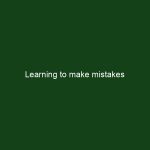We all make mistakes. Can we properly learn from our mistakes? Maybe. There are some tips that can help. You can find more here, here, here, and here. This time you should really read the resources I mention. Classification of mistakes There is no clear classification of mistakes except for legal mistakes. In legal documentss, …
KeyToStudy Offers:
Memory, Speedreading, and Analysis
KeyToStudy Overview:
Memory, Speedreading, and Analysis
ProlificFocus Overview:
Productivity, Motivation, and Projects
ProlificFocus Offers:
Productivity, Motivation, and Projects
Using reading diary
Reading diary is a tool we typically plan to use but end up not using. I confess I never really used a reading diary. I do use a number of alternative approaches. In this article, I will describe first what the reading diary theoretically should be, and then what can be used instead. Basic reading …
Work life balance: set boundaries, get effective, learn to say no
There are many positive skills and habits we know should master and practice in our lives. Finding time to practice these skills may be challenging. In fact, being skilled we are often sought after by other people. If we please all people who need our attention, we may lose the skills we cherish. Setting the …
Continue reading “Work life balance: set boundaries, get effective, learn to say no”
Getting out of comfort zone
Getting out of the comfort zone is important for personal growth and crucial for any attempt of achieving greatness. After my marriage with Anna she was convinced I am not living to my potential. So she made it a personal goal to take me out of my comfort zone. This is not an easy task, …
Use your gut feeling to memorize better
Quite often I find myself memorizing things using my “gut feeling” as dual coding. While this is not very common, there is some science behind it. In this post, I will try to shed some light on the subject. To some extent I was inspired by this, this, and this articles. Situation memory Our body …
Massive memory structures
I am occasionally asked how can someone remember 1 mil visualizations. Now 1 mil visualizations is a lot. For comparison, The King James Authorized Bible has 783,137 words. It is enough to know ~5000 words and 5000 phrases of a foreign language to be fluent, e.g. about 100,000 visualizations should suffice per language. Practically, not …
Micro PAO
Recently PAO became the default mode of visualization we teach. I will first explain the method as we use it and then why it became so prominent in our materials. Specific markers are trigrams Most of our students have advanced degrees and read complex materials. As materials get increasingly complex, a specific marker becomes a …
Why Blog Writing Is the Best Way for Fast Learning
This post is written by a professional blog writer, Tom Jager. Tom wrote many articles, some of them published with Huffington Post. When Tom suggested his ideas for the article, I asked him to tell about how learned from writing. I thought he would write something like this great article about how the photography is …
Continue reading “Why Blog Writing Is the Best Way for Fast Learning”
Apps and creativity
Some apps help us become smarter and more creative in strange and wonderful ways. Apps and games improve problem solving skills, brain processing speed, visual skills and memory. This post is inspired by reading this article and here. Less interesting reading here,here, here. Problem solving skills It is understandable that playing strategy games we develop …
Fighting age and stress
When we are young and inexperienced we make huge progress. If feels like we will be making the same kind of progress as we get older. Unfortunately this is not true. Our evalutaion of our future self is typically over-optimistic, and as we mature we need to face the consequences. You may read the articles …











